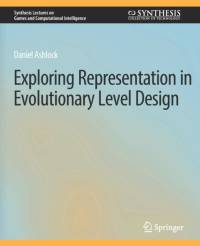Exploring Representation in Evolutionary Level Design
- Indbinding:
- Paperback
- Sideantal:
- 156
- Udgivet:
- 21. maj 2018
- Størrelse:
- 191x9x235 mm.
- Vægt:
- 305 g.
- 2-4 uger.
- 8. maj 2025
På lager
Normalpris
Abonnementspris
- Rabat på køb af fysiske bøger
- 1 valgfrit digitalt ugeblad
- 20 timers lytning og læsning
- Adgang til 70.000+ titler
- Ingen binding
Abonnementet koster 75 kr./md.
Ingen binding og kan opsiges når som helst.
- 1 valgfrit digitalt ugeblad
- 20 timers lytning og læsning
- Adgang til 70.000+ titler
- Ingen binding
Abonnementet koster 75 kr./md.
Ingen binding og kan opsiges når som helst.
Beskrivelse af Exploring Representation in Evolutionary Level Design
Automatic content generation is the production of content for games, web pages, or other purposes by procedural means. Search-based automatic content generation employs search-based algorithms to accomplish automatic content generation. This book presents a number of different techniques for search-based automatic content generation where the search algorithm is an evolutionary algorithm. The chapters treat puzzle design, the creation of small maps or mazes, the use of L-systems and a generalization of L-system to create terrain maps, the use of cellular automata to create maps, and, finally, the decomposition of the design problem for large, complex maps culminating in the creation of a map for a fantasy game module with designersupplied content and tactical features.
The evolutionary algorithms used for the different types of content are generic and similar, with the exception of the novel sparse initialization technique are presented in Chapter 2. The points where the content generation systems vary are in the design of their fitness functions and in the way the space of objects being searched is represented. A large variety of different fitness functions are designed and explained, and similarly radically different representations are applied to the design of digital objects all of which are, essentially, maps for use in games.
The evolutionary algorithms used for the different types of content are generic and similar, with the exception of the novel sparse initialization technique are presented in Chapter 2. The points where the content generation systems vary are in the design of their fitness functions and in the way the space of objects being searched is represented. A large variety of different fitness functions are designed and explained, and similarly radically different representations are applied to the design of digital objects all of which are, essentially, maps for use in games.
Brugerbedømmelser af Exploring Representation in Evolutionary Level Design
Giv din bedømmelse
For at bedømme denne bog, skal du være logget ind.
Find lignende bøger
Bogen Exploring Representation in Evolutionary Level Design findes i følgende kategorier:







